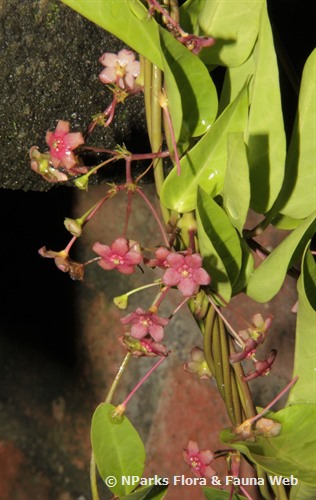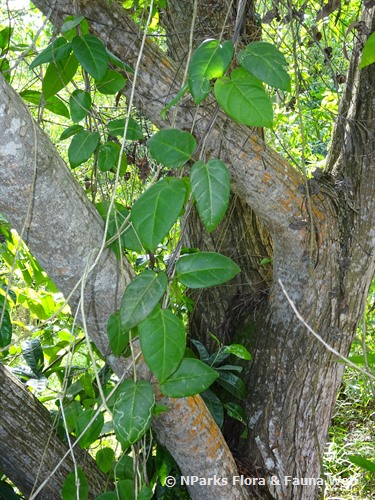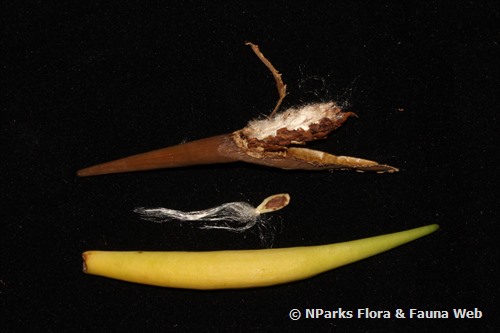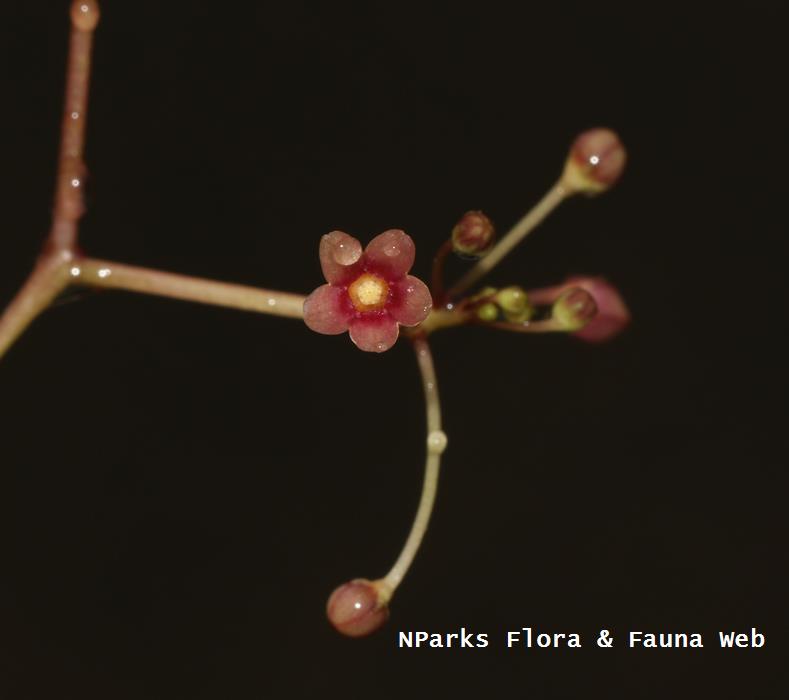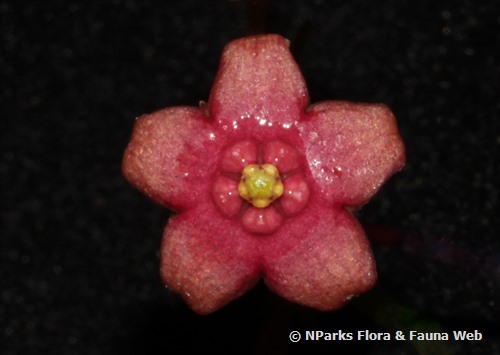
Back
Vincetoxicum globiferum (Hook.f.) Kuntze
| Family Name: | Apocynaceae |
| Synonyms: | Tylophora indica auct. non (Burm.f.) Merr. |
| Common Name: | Nayppalai |
Name
Classifications and Characteristics
| Plant Division | Angiosperms (Flowering Seed Plants) |
|---|---|
| Plant Growth Form | Climber |
Biogeography
| Native Distribution | India, Thailand, Peninsular Malaysia, Singapore, and Borneo |
|---|---|
| Native Habitat | Terrestrial |
| Preferred Climate Zone | Tropical |
| Local Conservation Status | Native to Singapore (Critically Endangered (CR)) |
Description and Ethnobotany
| Growth Form | It is a slender climber. |
|---|---|
| Foliage | Its opposite, stalked leaves have leaf blades that are oblong or egg-shaped-lance-shaped, and 3.8–10 by 1.3–4.3 cm. |
| Flowers | Its flowers grow in shortly stalked, axillary clusters. The sepals are long, narrow, and lance-shaped. Its corolla lobes are egg-shaped, yellow or dull pink. |
| Fruit | Its follicles are 7.5 by 0.63 cm. |
| Habitat | It grows in sandy places by river or sea. It occurs locally in Coney Island. |
| Associated Fauna | It is the preferred local food plant for caterpillars of the butterfly common crow (Euploea core). |
| Taxonomy | Previous name of Tylophora indica auct. non (Burm.f.) Merr. was misused in Singapore. Updated name of Vincetoxicum globiferum (Hook.f.) Kuntze is applicable to wild plants in Singapore but not necessarily to wild plants elsewhere or to cultivated plants originating elsewhere. |
Plant Care and Propagation
| Light Preference | Full Sun, Semi-Shade |
|---|---|
| Water Preference | Moderate Water, Little Water |
References
| References | Ridley, H. N.. 1923. The Flora of the Malay Peninsula, Volume.2. . London: L. Reeve & Co., Ltd. 672 |
|---|
Image Repository
Others
| Master ID | 31019 |
|---|---|
| Species ID | 5406 |
| Flora Disclaimer | The information in this website has been compiled from reliable sources, such as reference works on medicinal plants. It is not a substitute for medical advice or treatment and NParks does not purport to provide any medical advice. Readers should always consult his/her physician before using or consuming a plant for medicinal purposes. |

